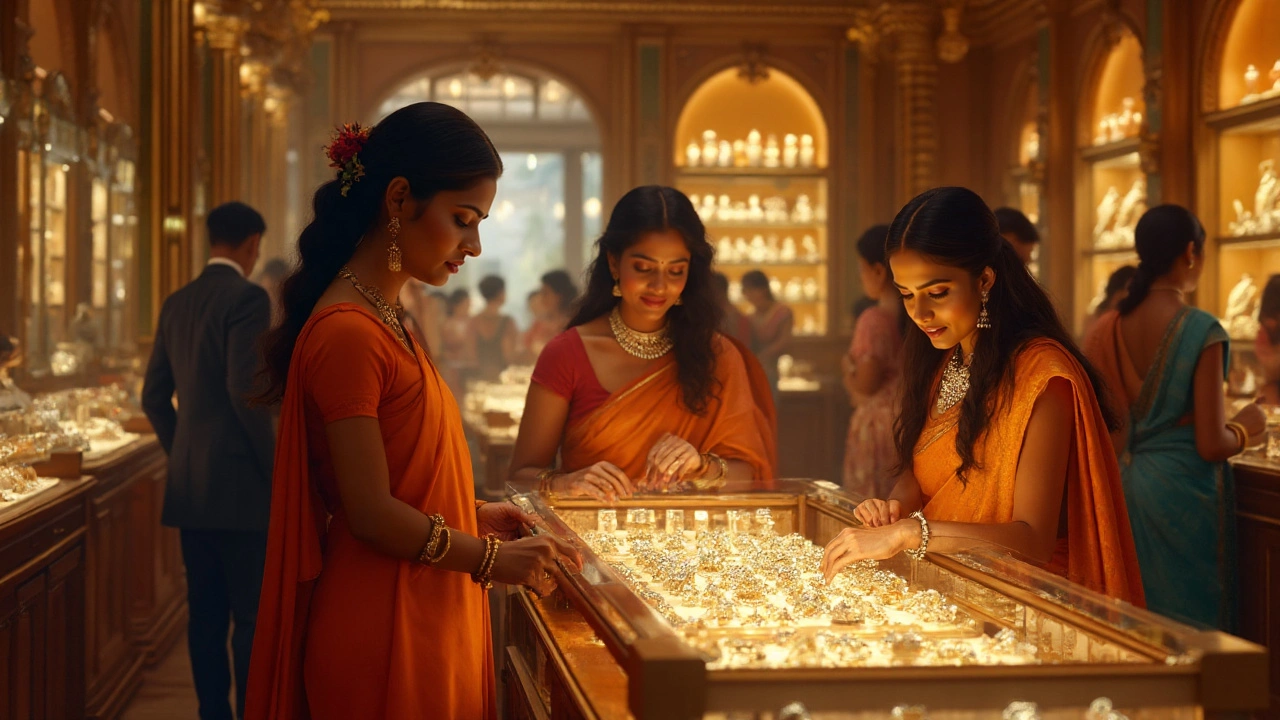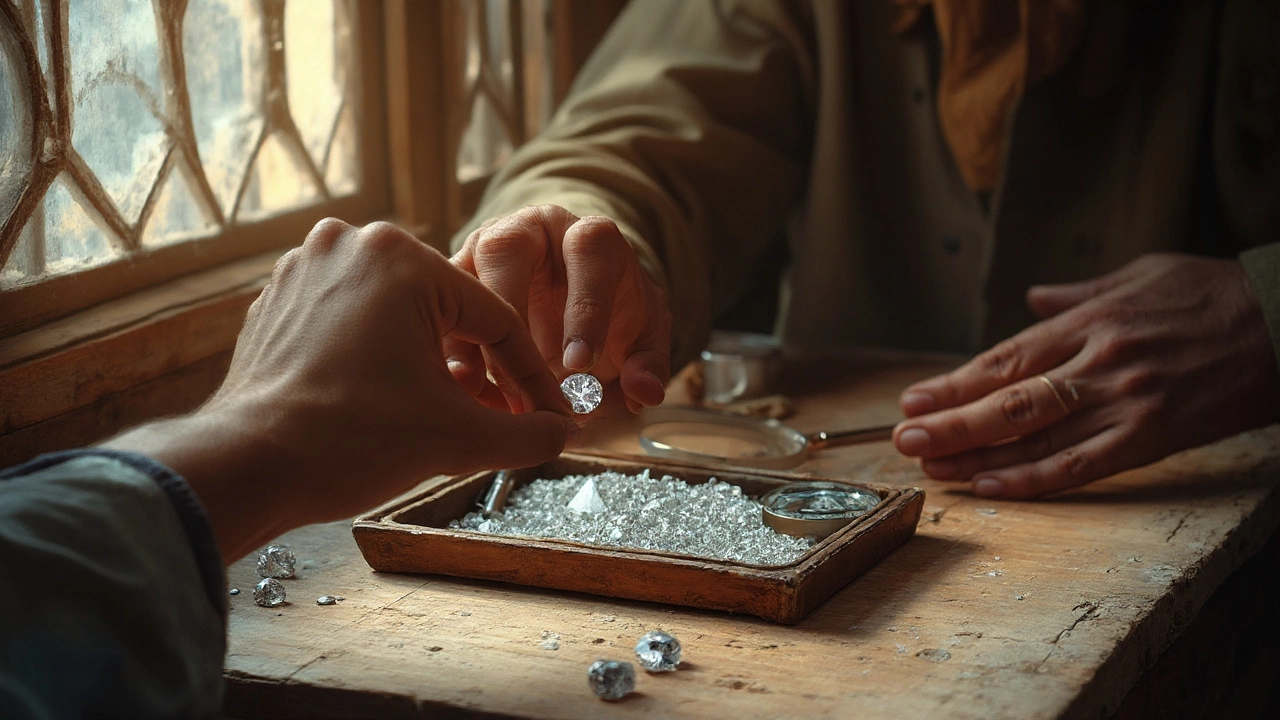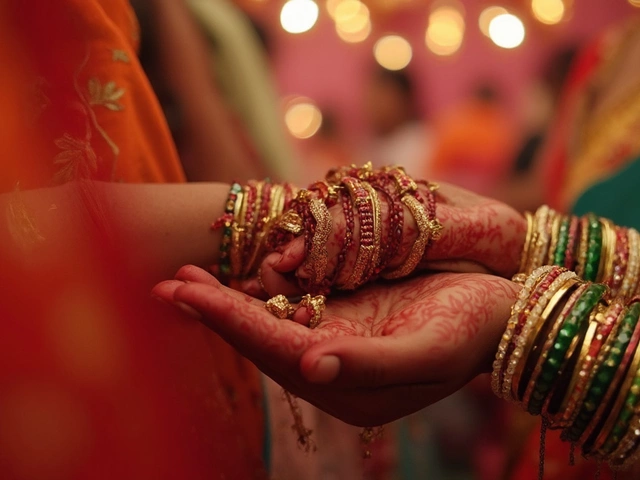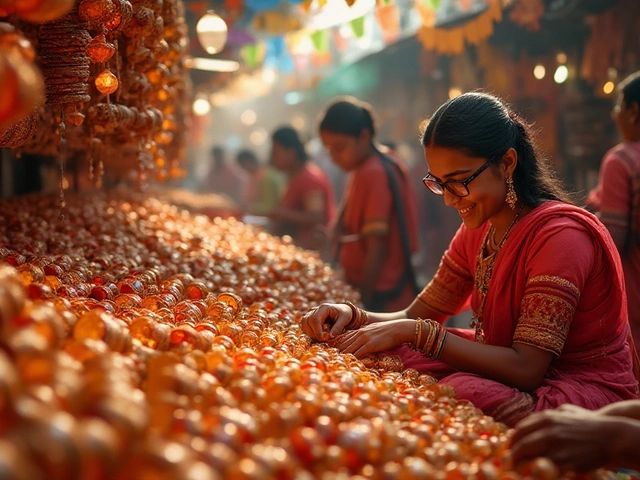
Everyone’s heard tales about friends getting a killer deal on a diamond ring overseas. But here’s the twist: that sparkling stone isn’t necessarily cheaper just because it’s from Mumbai or New York. In fact, you can pay wildly different prices for the same diamond, even on the same day, depending on where you shop and what you know about the market.
The diamond trade is full of rumors—stuff like, “India is the world’s diamond capital” or “The US has the best deals.” But when you peel back the curtain, there are some eye-opening facts and a little bit of smoke and mirrors. The real price of a diamond depends on more than location. Think taxes, market demand, how the diamond was cut, and the chain it takes to reach your finger.
The Global Diamond Market: How It Works
Let’s cut straight to it: Most of the world’s rough diamonds are mined in Africa, Russia, or Canada. But here’s the kicker—around 92% of all diamonds are cut and polished in India, especially in Surat, a city that’s all about gems. Even if the rough gem comes from Botswana or Siberia, odds are it’s getting its sparkle in India. Why? Labor costs are way lower, the polishing trade is highly skilled, and there are massive established trading networks.
Once those diamonds are ready for a new home, they head to wholesale hubs—usually Mumbai, Hong Kong, Antwerp, or Dubai. From there, stones are shipped to retailers, mostly in the US, China, and Europe. The US alone buys almost half of the world’s retail diamonds by value. That means both countries—India and the US—play starring roles, but in very different ways: India is big for manufacturing and wholesale, while the US is king for final retail sales.
In 2023, the global diamond jewelry market was worth around $90 billion, with the US making up about $40 billion of that. India, while huge in production, has a much smaller retail market, with most high-quality diamonds leaving the country as exports. You can see in the table below just how lopsided this is:
| Country | Annual Diamond Jewelry Sales (USD) | Diamond Market Role |
|---|---|---|
| USA | $40 Billion | Largest Retail Market |
| India | $5 Billion | Main Manufacturing & Export Hub |
This explains a lot. Diamonds are cheaper to process and wholesale in India but find their highest retail sticker price in the US. But that doesn’t tell the whole story—taxes and supply chains also deserve a hard look.
Breaking Down The Price: What Affects Diamond Cost?
If you’re searching for the “cheapest” diamond, it helps to know what’s baked into the price tag. There’s the famous 4Cs (Carat, Cut, Color, Clarity) heard in every jewelry shop. But that’s just part of the puzzle.
Import duties, local taxes, currency exchange rates, branding, and retailer markups—all these can change a diamond’s price by thousands of dollars. In India, rough or polished diamonds are technically duty-free if exported. Local taxes like GST (Goods and Services Tax) do apply to retail sales. Right now, there’s a 3% GST on diamond jewelry in India. If you’re a foreigner buying locally, you might not always pay GST, but don’t expect official tax refunds like tourists get on electronics or luxury goods.
In the USA, imported polished diamonds have no customs duty, but jewelry that includes diamonds can be taxed lightly (around 5.5% for jewelry items, depending on the state). US sales tax varies by state—some states like Oregon have 0%, while others like California or New York can be nearly 10%.
Here’s one thing most folks miss: US diamond retailers often have higher operating costs (rent, salaries, marketing). The markup can be hefty—sometimes double or triple the wholesale price. Meanwhile, in India, smaller jewelers or even direct wholesale markets may operate on thinner profit margins since they’re closer to the source.
But—some Indian shops mark up prices for tourists, expecting a little negotiation. And fakes or undisclosed treatments are more common at street-level stores in India, so it’s not all sunshine and cheap gems. Stick with established retailers whether you’re in Mumbai or Manhattan.

Comparing Diamond Prices: India Versus USA
If you take the same 1-carat, round brilliant, G color, VS1 clarity diamond—the classic engagement ring stone—here’s what you might pay retail right now (August 2025):
| Country | Approx. Price (1-Carat Premium Diamond) | Typical Retail Markup |
|---|---|---|
| India | ₹320,000 - ₹400,000 ($3,800 - $4,800 USD) | 10-20% |
| USA | $5,500 - $7,500 USD | 30-50% |
The *real* game changer? Buy loose diamonds at wholesale prices in India, and that same stone might sell for just $3,000. In the US you can get near-wholesale prices online, but bricks-and-mortar stores usually charge premium. Online retailers like Blue Nile and James Allen have shaken things up in the States, pushing prices closer to Indian levels in some cases.
Why such a gap? It all comes down to the supply chain. In India, you’re much closer to the beginning of the diamond’s journey, so every middleman you cut out saves you cash. In the US, there are more hands in the pot—distributors, retailers, and plenty of overhead.
Remember, brand reputation matters too, especially for high-value stones. Big US chains often sell GIA-certified diamonds, giving buyers peace of mind at a higher price. In India, international certification is available at top retailers, but some local shops use their own grading labs which may be less strict. Always demand a reliable certificate—GIA or IGI are safest bets—no matter where you buy.
Tips For Buying Diamonds In India and USA
Savvy buyers use these tips to avoid paying more than they need for a diamond, whether shopping in Delhi or Dallas:
- Always insist on a reputable certificate—preferably GIA or IGI. Uncertified diamonds or those with only an in-house certificate can be risky.
- In India, go to established showrooms—Tanishq, Malabar Gold, or trusted family jewelers with a track record, rather than side-street stalls in tourist areas.
- Negotiate! In India, it's almost expected. You may get 10-15% off sticker price, especially at local jewelers. Don’t expect the same wiggle room in big US chains, but ask about specials, financing offers, or package deals.
- Compare online prices (both countries). Sometimes, a US-based online retailer may be cheaper than an Indian retail shop when you factor in hassle, security, and currency swings.
- Check the current USD-INR exchange rate. If the rupee drops against the dollar, diamonds in India become even more affordable for tourists, but local prices can jump quickly if global supply is tight.
- If you’re traveling, figure out return and import duties in your country before buying overseas. Bringing diamonds above a certain value into Australia or the US can trigger customs fees or even confiscation without proper paperwork.
The one thing you can’t replace? Trust. Whether in India or the US, confidence in your jeweler matters more than saving a few hundred bucks.

Why Do People Still Buy Diamonds in the USA?
If diamonds are reliably cheaper in India, why do millions buy in the US? It mostly comes down to convenience, transparency, and after-sales service. You get local warranties, quick resizing, easy returns, and strong consumer protection laws in the States—stuff that's rare or tricky to enforce on foreign purchases. Most folks just don’t want to risk a big sum overseas on a product they can’t see again if something goes wrong.
Also, buying a diamond in the US feels less daunting because of industry regulation and robust certification practices. US retailers lean heavily on GIA or AGS grading, giving you a clearer idea of what you're actually buying. Shoppers enjoy the peace of mind of seeing, touching, and comparing stones in person, even if they pay a premium.
That said, trends are shifting. With the explosion of online diamond sellers and third-party verification labs, the price gap is shrinking. Just a decade ago, diamonds in India could be 50% less than the US. Now, the difference is often 10-25%—especially for high-spec stones.
Still, for buyers seeking big stones, unique cuts, or wanting to maximize value, traveling to India or buying direct from wholesalers (with all paperwork sorted) remains the best route. Just keep your wits about you and don’t skip the paperwork.
So, is diamond cheap in India or the USA? The answer boils down to access, know-how, and how much risk you’re willing to take. The best deals go to those who do their homework, know when to haggle, and never let excitement trump common sense.


